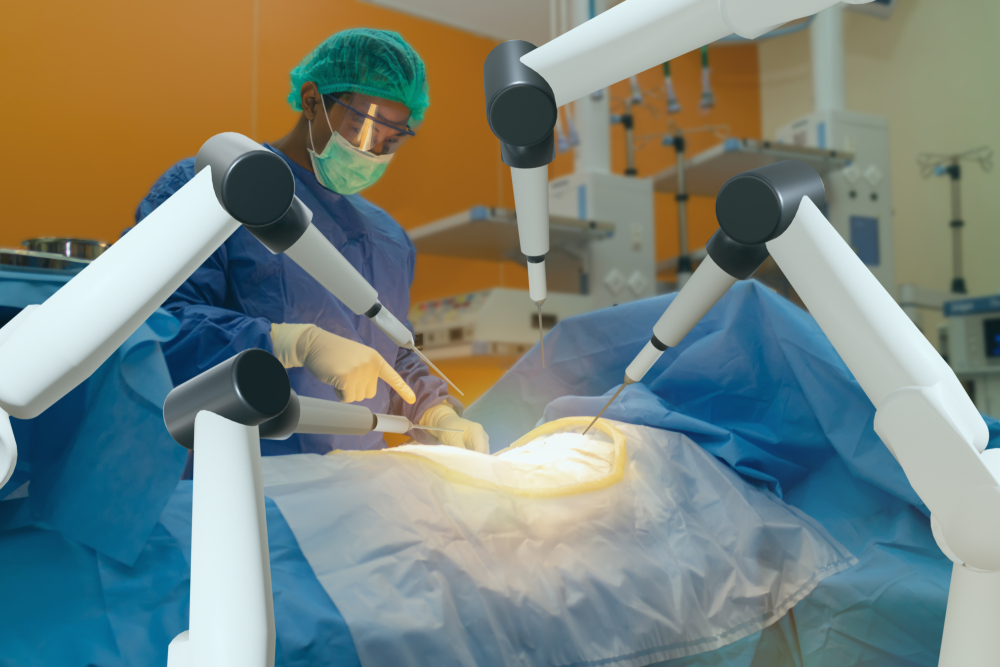Surgical AI relies on precisely labeled data to function safely and effectively. Every image, video frame, and instrument must be annotated with clinical accuracy to train models that assist with diagnosis, planning, and real-time decision-making. This process transforms raw surgical data into actionable intelligence. As AI takes on more responsibility in the operating room, the quality of annotation becomes a direct factor in surgical precision, efficiency, and patient safety.

What is Surgical Data Annotation?
Data annotation in surgical AI for patient care is a crucial process that involves labeling and categorizing data to train and improve artificial intelligence algorithms. Specifically in surgical AI, data annotation typically refers to labeling medical images, videos, or other relevant data to create a supervised learning dataset for training AI models.
How Annotated Data Powers Better Surgical Decisions
Precise Diagnoses
AI algorithms can be trained on annotated surgical data to identify and diagnose various medical conditions. By leveraging annotated data, AI models can detect abnormalities, tumors, or other critical factors in medical images, enabling early and more precise diagnoses. Early detection often leads to better treatment options and improved patient outcomes.
Personalized Treatment Plans
Surgical AI data annotation allows for a more personalized approach to patient care. By analyzing medical history, imaging data, and other relevant information, AI algorithms can assist surgeons in tailoring treatment plans specific to a patient. This personalized approach can optimize surgical procedures and improve post-operative recovery.
Surgical Planning and Simulation
AI-powered tools can analyze annotated surgical data to create detailed 3D models of a patient’s anatomy, helping surgeons plan and simulate complex surgical procedures. These simulations allow surgeons to practice the surgery beforehand, identifying potential challenges and devising strategies to overcome them. As a result, surgeries can be performed with greater precision and reduced risks.
Real-time Decision Support
During surgery, AI systems can analyze live data and provide surgeons with real-time decision support. By using annotated data to recognize critical structures, track the progress of the surgery, and assess potential risks, AI can offer valuable insights that assist surgeons in making well-informed decisions throughout the procedure.
Minimally Invasive Surgery (MIS)
AI data annotation contributes to the advancement of minimally invasive surgical techniques. With annotated data, AI models can improve the accuracy of robotic-assisted surgeries and laparoscopic procedures. It leads to smaller incisions, reduced trauma to the patient, faster recovery times, and fewer complications.
Post-operative Monitoring and Predictive Analytics
Annotated data can train AI models that monitor a patient’s post-operative progress. By analyzing various data points and comparing them to historical data, AI systems can detect potential complications early on and alert healthcare providers. Additionally, predictive analytics can help anticipate possible issues and proactively manage patient care.
Continuous Learning and Improvement
AI systems can continuously learn and improve as they process more annotated surgical data. As these models become more accurate and sophisticated, they contribute to better decision-making, reduced errors, and enhanced patient safety.
Common Surgical AI Data Annotation Use Cases
Surgical-phase Time Stamping
This use case involves annotating timestamps for various phases or events during a surgical procedure. These annotations help analyze surgical videos or recordings to understand the temporal sequence of each stage. Accurate time-stamping offers valuable insights that support better surgical training, workflow optimization, and improved patient care.
Frame-level Instrument Classification
In this process, surgical instruments are classified in each frame of a video to provide real-time information about which tools are being used at any given moment. This helps track instrument usage across different phases of a procedure and supports analysis of surgical techniques and efficiency.
Instrument Segmentation
Instrument segmentation focuses on identifying and outlining the regions of surgical instruments within a video or image. By creating pixel-level masks that define the exact boundaries of each tool, this process enables advanced surgical AI systems to assist with navigation, training, and performance analysis.
Lesion Localization and Scoring
- Lesion localization and scoring are two critical tasks in medical imaging and healthcare. These tasks are particularly relevant in diagnosing and evaluating the severity of various medical conditions, such as cancer, neurodegenerative diseases, and other abnormalities.
- Lesion Localization: Lesion localization involves identifying and localizing abnormalities, anomalies, or lesions in medical images.
Lesion scoring is the process of quantifying the severity or extent of lesions detected in medical images. This quantitative assessment helps in evaluating disease progression and response to treatments.
iMerit’s Role in Advancing Surgical AI
The quality of surgical AI depends on the precision of its data. Done right, annotation enables AI to assist surgeons in real time, detect problems earlier, and improve outcomes across the board. Achieving that level of impact also means handling sensitive data with care, maintaining privacy, and meeting rigorous ethical standards.
iMerit provides expert-led teams for scalable data annotation to the leading innovators in surgery and endoscopy AI. Our expert-in-the-loop data processes and automation tools have enabled high-volume training data for arthroscopy, cystoscopy, bronchoscopy, nasal and sinus endoscopy, and laparoscopy while accurately capturing valuable edge cases and long-tail pathophysiology.
Using US Board Certified physicians, iMerit facilitates regulatory approval through validation and benchmarking. iMerit’s contribution to robotic surgery is helping bring autonomous systems closer to reality while making surgery safer today.
Contact our experts today to explore how iMerit can accelerate your surgical AI models.
